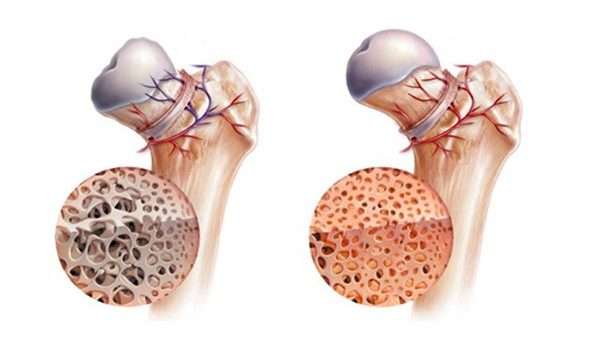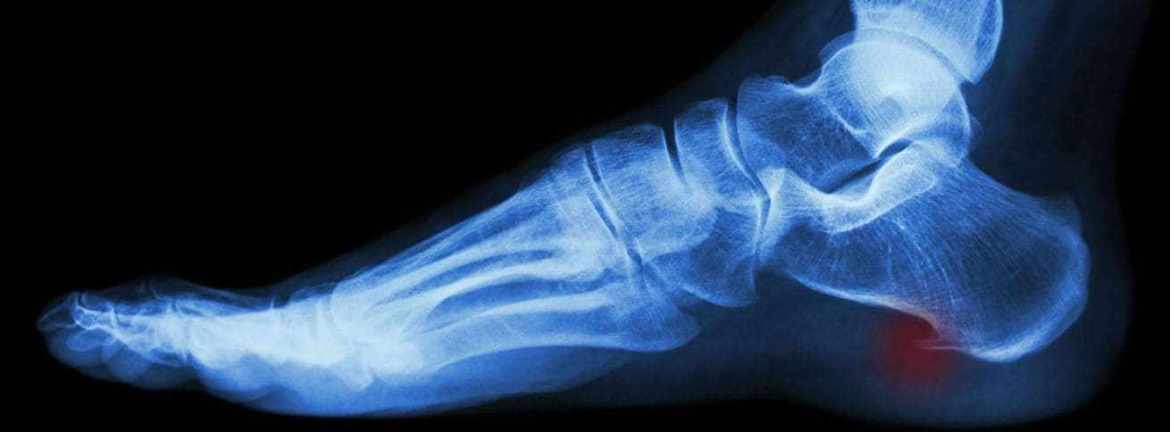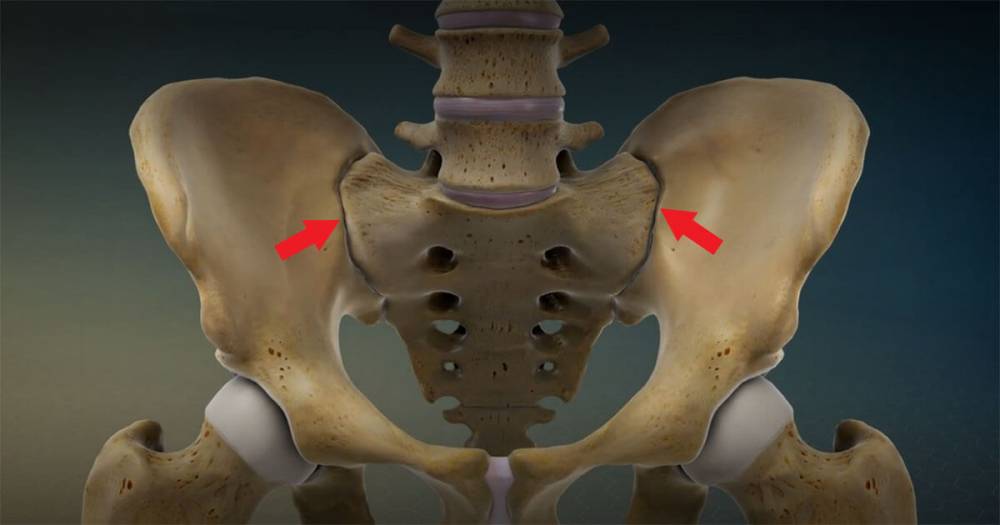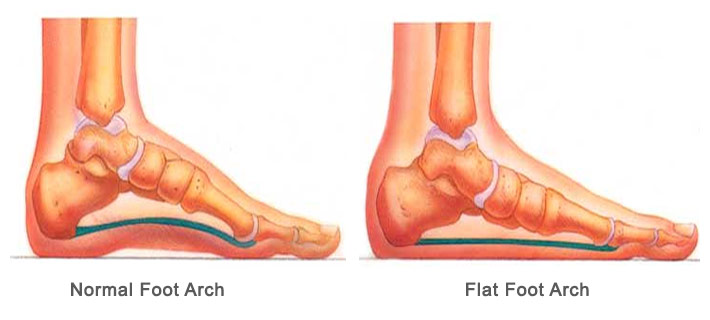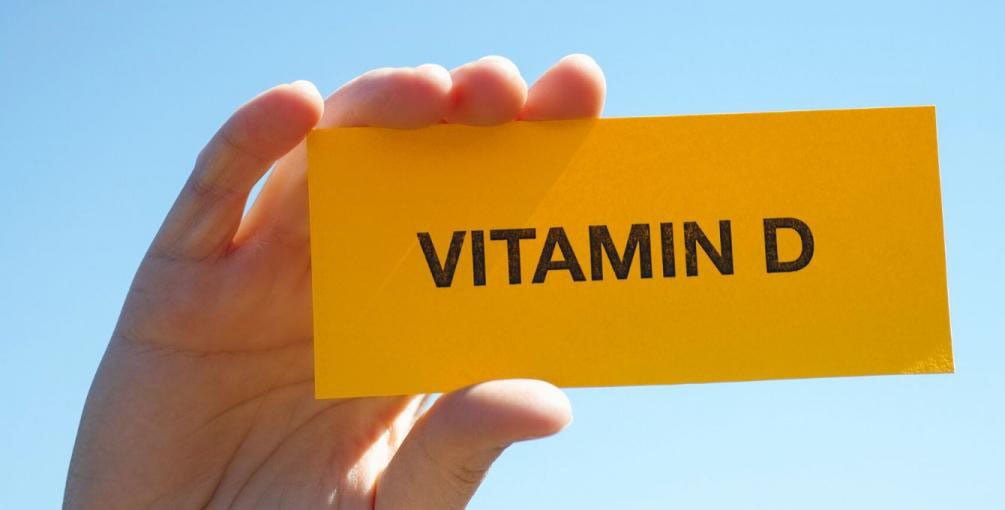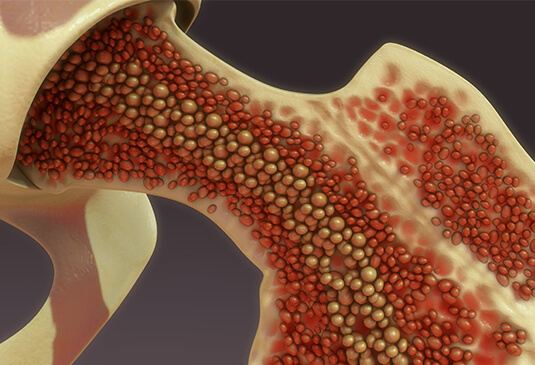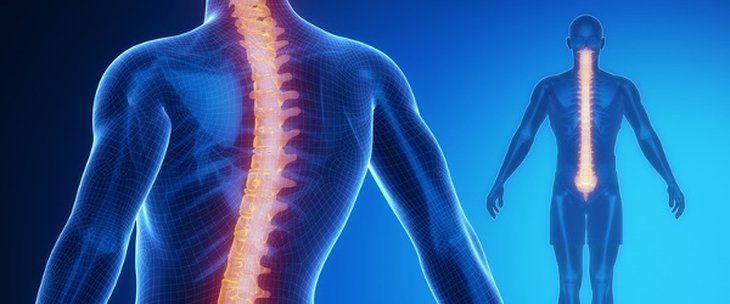Discover Effective Joint Treatment and Learn About Its Symptoms! What Are the Methods of Joint Treatment?
What Are the Methods of Joint Treatment?
Joints are vital parts of the body that allow bones to move and interact with each other. These joints include the knees, shoulders, wrists, hips, ankles, and more. Despite the importance of joints, they can be prone to injury or wear and tear over time, leading to pain and mobility issues. In this article, we will explore various methods of joint treatment.
- Physical Therapy: Physical therapy is considered one of the top options for enhancing joint health and recovering from injuries. Physical therapy involves exercises to strengthen the muscles and increase flexibility in affected joints. This type of treatment can help reduce pain and improve joint function.
- Medications: There is a variety of medications that can be used to treat joint problems. These medications include non-steroidal anti-inflammatory drugs (NSAIDs) that help alleviate pain and inflammation, pain-relieving drugs, and supplements like glucosamine and chondroitin that can help strengthen cartilage.
- Heat and Cold Therapy: Heat can be used for inflamed joints to relax muscles and increase blood circulation, while cold therapy can reduce inflammation and alleviate pain.
- Injection Therapy: Injection therapy may involve injecting components like steroids or glucosamine and chondroitin supplements directly into affected joints. This type of treatment can help relieve pain and improve joint function.
- Exercise and Weight Loss: Daily exercises help strengthen the muscles surrounding the joints and improve stability. This can reduce joint pressure and minimize pain. Additionally, weight loss, if you are overweight, can reduce stress on the joints.
- Surgical Treatment: In cases of severe pain or significant joint deterioration, surgery may be the last resort. Surgical procedures may include joint replacement and repairing damaged tissues.
- Complementary and Alternative Therapies: There are many complementary and alternative therapies such as massage therapy, herbal therapy, ozone therapy, laser-guided therapy, and more. These therapies are commonly used as additions to traditional treatments.
- Pain Management and Relief Techniques: Pain management and relief techniques include relaxation, meditation, psychotherapy, and techniques to enhance physical awareness, aiming to reduce pain and increase comfort.
In short, there are many options available for joint treatment, and the choice depends on the type and severity of the issue. It is always advisable to consult a bone specialist or orthopedic doctor before starting any form of treatment to provide a proper assessment and guidance.
What Is the Beneficial Drink for Joint Pain?
There is no doubt that joint pain can be distressing and painful, and there are many factors that can affect joint health, such as arthritis and cartilage degeneration. There are several beverages claimed to contribute to pain relief and promote joint health. Let’s take a look at some of these beverages and whether they are truly effective:
- Water: Drinking an adequate amount of water is essential for joint health. Joints need hydration and lubrication to function properly. Dehydration can increase cartilage friction and lead to worsening pain, so it is crucial to drink sufficient water throughout the day.
- Fruit and Vegetable Juices: Fruit and vegetable juices contain antioxidants, vitamins, and minerals that can contribute to reducing inflammation and improving joint health. For example, berry juice contains anti-inflammatory compounds known as polyphenols, which can be beneficial for joints.
- Turmeric Juice: Turmeric is a commonly used spice in Indian cuisine and contains an active compound called curcumin, which is a natural anti-inflammatory. Turmeric juice can be prepared by mixing turmeric powder with water or milk, and these beverages may be beneficial for joints.
- Ginger Tea: Ginger is believed to have anti-inflammatory and antioxidant properties, and drinking ginger tea may be helpful for joints and pain reduction.
- Citrus Fruit Juices: Citrus fruits like oranges and lemons contain vitamin C, which is an antioxidant that can contribute to strengthening the tissues surrounding the joints and cartilage.
- Berry Juices: Berries contain anti-inflammatory and antioxidant compounds known as polyphenols, which may be beneficial for joints.
- Cherry Juices: Cherries contain anti-inflammatory compounds known as anthocyanins, and studies have shown that drinking cherry juice can help reduce pain associated with joint inflammation.
- Dairy Beverages: Milk and dairy products like yogurt contain calcium and vitamin D, which can help strengthen bones and joints.
Please note that the effect of these beverages may vary from person to person, and it is essential to consult a doctor before starting any dietary regimen or making changes to your diet to ensure it is suitable for your individual health condition. Additionally, patients suffering from chronic conditions like arthritis should consult a rheumatologist or a physical therapist to receive a customized treatment plan.
What Herbs Treat Joint Problems?
Medicinal herbs and plants have a long history of use in traditional medicine to alleviate pain and treat joint problems. The effectiveness of these herbs depends on their active components and their potential interactions with the body. Here, we will take a look at some herbs that are claimed to help treat joint problems:
- Turmeric: Turmeric is a plant that contains an active compound known as curcumin, which is renowned for its anti-inflammatory properties. Consuming turmeric or using turmeric supplements may help reduce pain associated with conditions like rheumatoid arthritis and osteoarthritis.
- Ginger: Ginger is another natural anti-inflammatory plant. Research suggests that consuming ginger can alleviate pain and swelling associated with joint problems.
- Boswellia: This Indian herb has been traditionally used to treat arthritis and joint pain. It contains compounds known as boswellic acids and boswellic acid derivatives, which have shown effectiveness in reducing pain and inflammation.
- Cloves: Cloves contain a substance called eugenol, which is an anti-inflammatory compound known for its ability to reduce pain and swelling.
- Saffron: Saffron is a spice rich in antioxidants and anti-inflammatory compounds. It may help reduce symptoms of arthritis and pain.
- Ginkgo Biloba: The use of Ginkgo biloba extract is believed to improve blood flow to the joints, thereby reducing pain and increasing mobility.
- Green Ginger (Moringa): This plant, rich in vitamins and minerals, shows effectiveness in reducing inflammation and pain.
- Jujube: Jujube extract is believed to contain compounds that contribute to pain and swelling reduction.
Please note that the use of herbs for treating joint problems should be done with caution and under the guidance of a healthcare professional. Some herbs may interact with other medications or may not be suitable for certain diseases or health conditions. Therefore, it is essential to consult a medical professional before starting any herbal treatment regimen.
How Do You Know If You Have Arthritis?
Arthritis is a comprehensive term that refers to a variety of conditions that cause inflammation in the joints, affecting any part of the joint, including cartilage, joint lining, muscles, tendons, and surrounding blood vessels. Among the common types of arthritis are rheumatoid arthritis, osteoarthritis, psoriatic arthritis, gout, and ankylosing spondylitis.
Here, we will look at some signs and symptoms that may indicate the possibility of having arthritis:
- Joint Pain: One of the most common symptoms is joint pain. The pain can be either acute or chronic and may worsen gradually or suddenly. Swelling and stiffness in the joints may accompany the pain.
- Joint Swelling: Swelling is an increase in the size of the joint due to fluid accumulation or inflammatory swelling. The joint can be painful and difficult to move.
- Joint Stiffness: Joints may become less flexible and less mobile due to swelling and inflammation, leading to difficulty in performing daily movements.
- Redness and Warmth of Joints: The joint may become red and warm to the touch due to inflammation.
- Fatigue and Malaise: Arthritis can be accompanied by general fatigue and malaise.
- Muscle and Tendon Pain: Sometimes, the pain can extend from the joints to the surrounding muscles and tendons.
- Abnormal Joint Shape: In some cases, the shape of the joint can change due to wear and tear.
- Systemic Symptoms: Occasionally, arthritis can affect other parts of the body and cause systemic symptoms such as fever, weight loss, and fatigue.
- Progression of Symptoms: Typically, arthritis symptoms worsen over time and can be influenced by periods of symptom exacerbation and periods of stability.
If you believe you have any of these symptoms or are experiencing joint pain that affects your daily life, it is essential to consult a doctor. The doctor will provide the necessary evaluation and conduct the required tests to determine the diagnosis and prescribe appropriate treatment if necessary.
How to Strengthen Your Joints?
Joint strength is an essential factor in maintaining healthy mobility and an active lifestyle. Strong joints reduce the risk of injuries and contribute to the ability to perform daily activities efficiently. Here are some ways to enhance the strength of your body’s joints:
- Exercise: Physical exercise plays a crucial role in strengthening joints. Sports that involve weightlifting, such as weightlifting itself, help strengthen the muscles around the joints and improve their stability. Additionally, activities like swimming, yoga, and balance exercises can enhance joint flexibility.
- Eat Healthy: Nutrition plays a significant role in promoting joint health. Consuming foods rich in calcium, such as milk, cheese, and yogurt, helps boost bone and joint strength. Moreover, consuming foods containing antioxidants like fruits and vegetables may reduce joint inflammation.
- Maintain a Healthy Weight: Excess weight increases the pressure on joints, potentially leading to wear and tear and an increased risk of joint problems. Maintaining a healthy weight through diet and physical activity can alleviate this pressure.
- Rest and Pampering: It’s essential to give your joints time to rest between strenuous physical activities. Relaxation sessions like massages can help relieve tension and improve joint flexibility.
- Strengthen Surrounding Muscles: The strength of muscles surrounding the joints enhances their stability and reduces stress on them. Muscle-strengthening exercises like squats, presses, and bends can help achieve this.
- Warm-Up and Stretch: Before engaging in intense physical exercises, proper warm-up and stretching are necessary to avoid sudden joint strain.
- Consult a Physician: If you suffer from chronic joint problems or experience persistent pain, consult a specialist in orthopedics or rheumatology for a personalized evaluation and guidance on how to strengthen your joints and address potential issues.
- Maintain Discipline: Refraining from smoking and avoiding excessive alcohol consumption can reduce the risk of joint inflammation and related problems.
In conclusion, joint strength relies on a combination of suitable exercises, healthy nutrition, and medical consultation when necessary. Prioritizing joint health and preventive measures can have a positive impact on your quality of life and your ability to enjoy daily and sports activities.
What Are the Vitamins Beneficial for Joints?
Vitamins are essential compounds for human health, performing various vital functions in the body, including the maintenance, strengthening, and preservation of joint health. Vitamins play a crucial role in reducing joint wear and tear and strengthening bones and the tissues surrounding the joints. In this article, we will take a look at some key vitamins that are considered beneficial for joint health:
- Vitamin D: Vitamin D is one of the primary vitamins for joint health. It plays a critical role in the absorption and storage of calcium in bones, helping to strengthen the skeletal structure and joints. Vitamin D can be obtained from exposure to sunlight and certain foods such as fatty fish and vitamin D-fortified dairy products.
- Vitamin C: Vitamin C is a potent antioxidant that contributes to strengthening connective tissues and improving collagen production, which is an essential component of joint cartilage. Vitamin C is naturally found in fruits and vegetables like oranges, strawberries, and broccoli.
- Vitamin E: Another antioxidant, vitamin E, helps maintain joint health and combat inflammation. Vitamin E can be found in plant oils, nuts, and sunflower seeds.
- Vitamin K: Vitamin K is essential for balancing calcium levels in the body, helping to prevent calcium buildup in joints and blood vessels. Vitamin K can be found in leafy green vegetables such as spinach and kale.
- Vitamin B6: Vitamin B6 helps reduce homocysteine levels, which, when elevated in the body, can increase the risk of joint cartilage damage. Vitamin B6 can be found in meats, grains, and potatoes.
- Vitamin A: Vitamin A is important for the health of cartilage and tissues surrounding the joints. Vitamin A can be found in foods such as carrots, sweet potatoes, and liver.
- Vitamin B12: Vitamin B12 contributes to the repair and maintenance of nerve fibers and nerves surrounding the joints, helping to prevent joint problems. Vitamin B12 can be found in meats, fish, and animal products.
- Vitamin B3 (Niacin): Vitamin B3, or niacin, helps improve blood vessel elasticity and fluid balance in the body, which can be beneficial for joints. Niacin can be found in meats, fish, and legumes.
It is important to ensure that these essential vitamins are included in your daily diet to contribute to joint health. However, it is advisable to consult with a physician before taking vitamin supplements to ensure that you are not consuming more than necessary and that they are suitable for your specific health condition.
What Causes Body Joint Pain?
Body joint pain is a common issue that affects many individuals and can have multiple causes. One of these causes is problems related to the joints. Joints are the points where bones meet and allow for movement. Any change or issue in these joints can lead to pain in the body. Here are some common reasons that can cause pain in all body joints:
- Arthritis: Arthritis is a condition that affects the joints and causes swelling and pain. Arthritis includes various types such as rheumatoid arthritis, osteoarthritis, psoriatic arthritis, and gout. These conditions tend to be chronic and require ongoing medical care.
- Tendonitis and Tendinitis: Tendonitis and tendinitis can lead to pain in the body, especially when performing activities involving repetitive motions of the arms and legs.
- Cartilage Tears: Cartilage tears involve damage to the cartilage that covers the ends of bones in the joints. This damage can cause pain and put pressure on the nerves surrounding the joint.
- Muscle Strain: Excessive muscle strain or overuse of muscles can lead to pain in the muscles and joints.
- Psychological Stress: Stress and anxiety can increase the body’s sensitivity to pain and cause muscle and joint spasms and pain.
- Injuries: Acute injuries such as bruises, fractures, and ligament tears can cause joint pain.
- Other Medical Conditions: Some other medical conditions such as gout, fibromyalgia, and irritable bowel syndrome can cause body joint pain and affect the joints.
- Aging: As individuals age, the natural wear and tear of joints and bones can increase, leading to pain in the body.
Anyone experiencing severe or chronic body joint pain or pain that persists for an extended period should consult a doctor for proper evaluation and diagnosis. The treatment of body joint pain depends on the underlying cause and may involve medical treatments, natural therapies such as physical therapy, lifestyle changes, and medications as needed.
What Should a Rheumatoid Arthritis Patient Eat?
Rheumatoid arthritis is a chronic medical condition that affects the joints and the surrounding tissues, causing pain, swelling, and difficulty in movement. While food cannot cure rheumatoid arthritis, maintaining a healthy and balanced diet can play a crucial role in managing symptoms and reducing inflammation. Here are some tips on what a rheumatoid arthritis patient should eat:
- Fatty Fish: Fish like salmon, tuna, and sardines are rich in omega-3 fatty acids, which are beneficial for rheumatoid arthritis patients. These acids help reduce inflammation and swelling in the joints.
- Fruits and Vegetables: Rheumatoid arthritis patients should include fruits and vegetables in their daily diet. These foods are rich in antioxidants, vitamins, and minerals that help reduce joint inflammation and promote overall health.
- Whole Grains: It is preferable to consume whole grains like oats, quinoa, and other whole grains instead of refined grains. Whole grains contain more fiber and nutrients beneficial for general health.
- Lean Meats: Rheumatoid arthritis patients can consume lean meats such as chicken, turkey, and white meats in moderate amounts. It is advisable to avoid fatty red meats that may increase joint inflammation.
- Low-Fat Dairy Products: Opt for low-fat dairy products or plant-based alternatives like almond milk or soy milk. These products provide calcium and vitamin D, which are essential for bone and joint health.
- Ginger and Turmeric: Ginger and turmeric are natural spices that are effective in reducing swelling and inflammation. They can be added to meals as spices or taken as supplements.
- Healthy Oils: Olive oil, canola oil, and turmeric oil are considered healthy oils that contain beneficial compounds for arthritis inflammation. They can be used for cooking instead of saturated fats.
- Stay Hydrated: Staying well-hydrated and drinking plenty of water can help alleviate pain and contribute to joint health.
- Avoid Triggering Foods: Rheumatoid arthritis patients should avoid foods and beverages that may increase inflammation, such as sugar, saturated fats, and processed foods.
- Consult a Dietitian: It is a good idea to consult a dietitian or physician to determine the most suitable dietary plan for individual health and tailor the diet accordingly.
Rheumatoid arthritis patients should steer clear of foods that may exacerbate inflammation and adhere to a healthy, balanced diet. Remember that consulting a physician is crucial for assessing the condition and determining the appropriate dietary treatment.
What Fruits Are Beneficial for Arthritis?
Arthritis is a painful condition that affects the joints, causing swelling, stiffness, and inflammation. Good nutrition can play a significant role in managing arthritis symptoms, and some fruits can be particularly helpful in this regard. Here are some fruits that can contribute to reducing inflammation and improving joint health:
- Blueberries: Blueberries are one of the best fruits for arthritis patients. They are packed with antioxidants like flavonoids and salicylic acid, which can help reduce inflammation and alleviate pain.
- Apples: Apples are rich in fiber, antioxidants, and vitamin C, promoting overall health and reducing the risk of arthritis-related inflammation.
- Cherries: Cherries contain anti-inflammatory compounds that can help reduce pain and swelling associated with arthritis.
- Pineapple: Pineapple contains the enzyme bromelain, which may help reduce inflammation and improve digestion.
- Strawberries: Strawberries are rich in antioxidants, fiber, and vitamin C, making them beneficial for reducing joint inflammation and improving joint health.
- Papaya: Papaya contains the enzyme papain, which is an anti-inflammatory that can help reduce pain and swelling.
- Grapes: Grapes are rich in antioxidants and compounds like resveratrol, which contribute to reducing inflammation and promoting joint health.
- Oranges: Oranges are a good source of vitamin C, which helps strengthen the immune system and reduce joint inflammation.
- Apricots: Apricots contain vitamin A, vitamin C, antioxidants, and fiber, making them helpful in relieving joint pain.
- Bananas: Bananas are rich in potassium, a mineral that can help reduce muscle cramps and joint inflammation.
- Pears: Pears are high in fiber and vitamin C, beneficial for digestion and reducing joint inflammation.
- Figs: Figs contain antioxidants and fiber, which can be helpful in alleviating joint pain.
It’s essential for fruits to be part of a balanced diet for arthritis patients. Alongside consuming fruits, it’s advisable to avoid processed foods and dietary supplements that may increase joint inflammation. Consulting a nutritionist or a physician is preferred to determine the appropriate dietary plan for each individual’s condition.
What Is the Difference Between Arthritis and Rheumatism?
Arthritis and rheumatism are two medical disorders that affect the musculoskeletal system and can cause pain, swelling, and inflammation in joints, muscles, and surrounding tissues. Although they may share some symptoms, they differ in causes, diagnosis, and treatment. In this article, we will review the differences between arthritis and rheumatism.
Arthritis: Arthritis is a general term that refers to a variety of conditions that affect the joints. Arthritis can result from various causes, such as the gradual wear and tear of joints with aging (osteoarthritis), injuries, infections, or autoimmune diseases.
Different types of arthritis include:
Rheumatoid Arthritis: This type of arthritis is an autoimmune disease where the immune system attacks the body itself, causing joint inflammation and affecting surrounding tissues.
Osteoarthritis: This type of arthritis results from the gradual breakdown of cartilage covering the ends of bones in joints. It can be caused by aging, stress, or previous injuries.
Psoriatic Arthritis: This type is associated with the chronic skin condition known as psoriasis and can affect joints, causing swelling and pain.
Rheumatism: Rheumatism is a non-specific and general term used to refer to pain and swelling that can affect joints, muscles, and tissues surrounding the joints. Rheumatism can be a symptom of various health conditions, including arthritis, muscle inflammation, and tendon inflammation.
Key Differences Between Arthritis and Rheumatism:
Causes: Arthritis is a specific diagnosis for a condition that affects joints. Rheumatism is a general term referring to pain and swelling that can result from various different conditions. Symptoms: Arthritis includes pain and swelling in the joints, often accompanied by limited or reduced joint movement. Rheumatism includes pain and swelling in joints, muscles, and tissues surrounding the joints and may result from various different causes. Diagnosis: Arthritis is typically diagnosed by a rheumatologist using clinical examinations, X-rays, and blood tests. Diagnosing rheumatism depends on the patient’s symptoms and medical history and may require additional tests to determine the exact cause of the pain. Treatment: Treatment for arthritis depends on the type and severity of arthritis and may include anti-inflammatory medications, physical therapy, exercise, and, in severe cases, surgery. Treatment for rheumatism varies based on the underlying cause and may involve anti-inflammatory medications, physical therapy, and psychological therapy, if necessary.
In conclusion, despite the similarity of symptoms between arthritis and rheumatism, they differ in causes, diagnosis, and treatment. It is always advisable to consult a physician for an accurate assessment of your condition and appropriate treatment.


